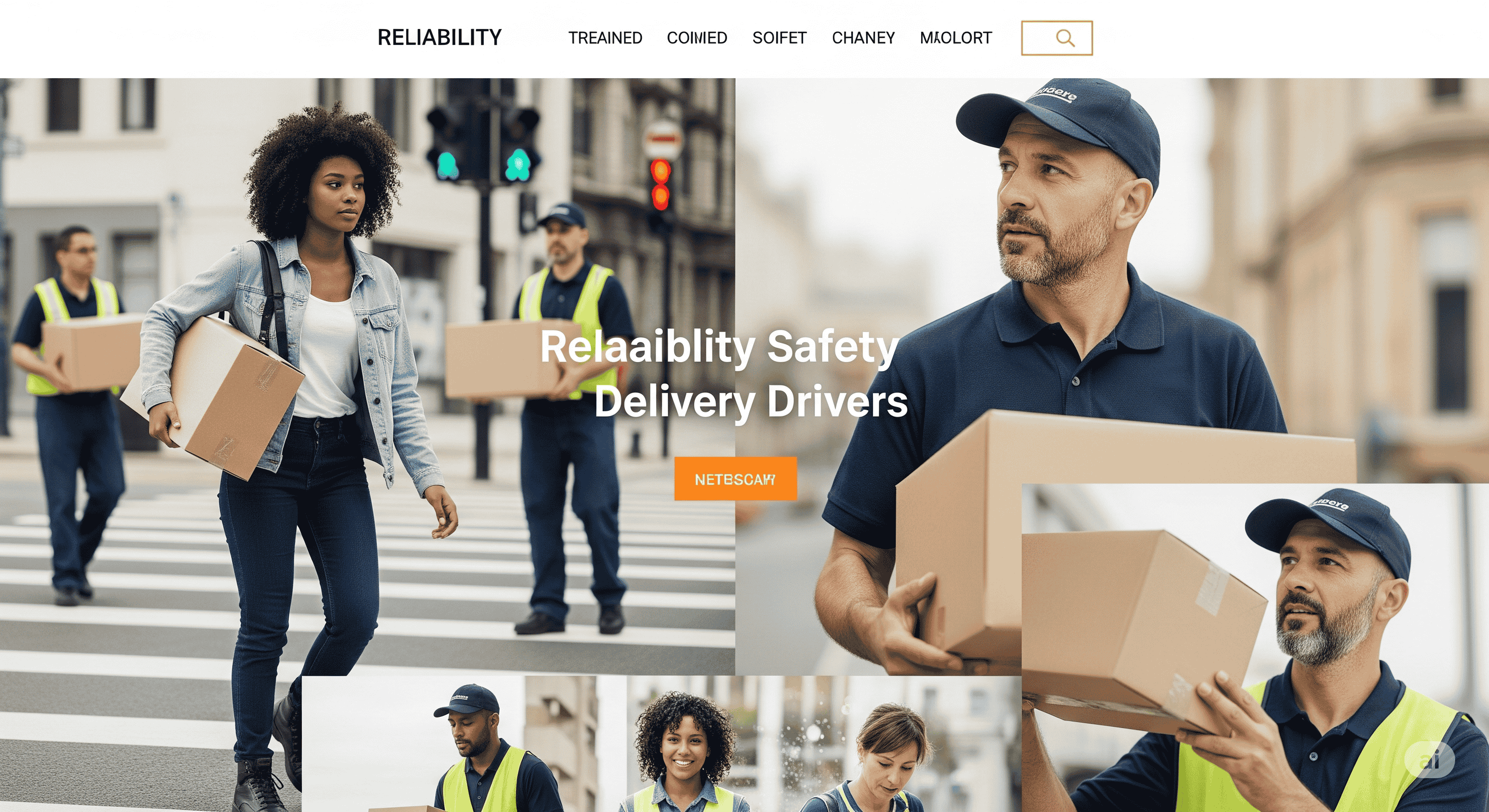🚚 Training Delivery Drivers – What Works Best in the Indian Context
The delivery business in India is booming—whether it’s food, e-commerce packages, grocery orders, or medicines, millions of deliveries happen every day. With such rapid growth comes a serious challenge: ensuring that delivery drivers are trained, responsible, and safe on the road.
At Hubert Ebner India, we believe that professional training is not just an option—it’s a necessity. Delivery drivers represent the brand, handle time-critical tasks, and operate in high-stress traffic environments. Smart, consistent, and behavior-focused training can lead to fewer accidents, timely deliveries, and improved customer satisfaction.
🧭 Why Training Delivery Drivers Is Crucial
India’s traffic density, poor road infrastructure, and unpredictable driving behavior create a high-risk environment for delivery drivers. Without training, issues like speeding, reckless overtaking, wrong-side driving, and mobile phone usage become common.
Training helps solve:
- 📉 High accident and injury rates
- 🕐 Missed or delayed deliveries
- 💬 Poor customer interactions
- 🛠️ Increased vehicle wear and fuel consumption
- 📋 Non-compliance with traffic rules and employer SOPs
🔑 What Makes a Good Delivery Driver Training Program?
Let’s look at the essential components that make training effective for delivery personnel:
1. 🛣️ Road Safety & Defensive Driving
Delivery drivers must navigate narrow lanes, urban congestion, and unpredictable road users like pedestrians, two-wheelers, and animals. Defensive driving modules should include:
- Hazard anticipation
- Lane discipline
- Speed control
- Blind spots and mirror usage
- Overtaking and junction behavior
- Braking techniques and stopping distances
Hubert Ebner India’s simulator-based and VR-enhanced modules allow drivers to experience real-life road situations in a controlled setting.
2. 📦 Route Planning & Time Management
Poor route planning leads to delays, fuel waste, and driver fatigue. Drivers should be trained on:
- Using maps and navigation tools
- Identifying alternate routes
- Avoiding high-traffic areas and construction zones
- Managing multiple deliveries efficiently
- Adhering to delivery timelines
This boosts on-time delivery rates and improves customer satisfaction.
3. 🧠 Behavioral & Stress Management
Delivery work can be stressful—tight deadlines, irate customers, extreme weather, and long hours take a toll. Drivers should be trained in:
- Stress handling and calm communication
- Anger management and dealing with aggressive road users
- Maintaining professionalism even under pressure
- Managing fatigue and taking breaks
Hubert Ebner’s behavior-focused training helps reduce road rage, burnout, and customer complaints.
4. 🏍️ Vehicle Handling & Maintenance
Whether it’s a two-wheeler, van, or small truck, drivers must understand their vehicle:
- Daily pre-ride checks (brakes, lights, horn, tyres)
- Fuel-efficient driving techniques
- Proper loading/unloading of cargo
- Emergency handling: tire bursts, breakdowns, skids
- Reporting faults or damage on time
We provide hands-on workshops and checklists to instill vehicle responsibility.
5. 📞 Customer Service & Brand Representation
Drivers are often the only human contact between a brand and its customer. Train them on:
- Greeting customers courteously
- Communicating clearly about delivery issues
- Handling OTPs and payment safely
- Wearing uniforms and ID cards
- Reporting disputes or incidents respectfully
This turns drivers into brand ambassadors—a major asset in today’s competitive market.
6. ⚖️ Traffic Law Compliance & Legal Awareness
In India, many drivers are unaware of updated MV Act penalties, lane rules, helmet/seatbelt requirements, and delivery license mandates. Training must cover:
- Latest traffic laws and fines
- Driving license types and renewal
- Importance of documentation (insurance, permits)
- Role of traffic police and rights during checks
Understanding rules reduces legal troubles and improves road behavior.
7. 🖥️ Use of Technology & Apps
Delivery companies use mobile apps for order tracking, navigation, attendance, and support. Training should include:
- Using order assignment systems
- Navigating using GPS tools
- Digital proof of delivery (photo, signature, OTP)
- Emergency contact features
- App troubleshooting
Digital fluency is now a core driver skill.
📈 How Hubert Ebner India Helps Companies Train Delivery Drivers
We work with logistics firms, e-commerce companies, food delivery platforms, and courier partners to train their driver workforce at scale. Our training is:
- ✅ Available in multiple Indian languages
- ✅ Delivered via classroom, simulator, or mobile eLearning
- ✅ Tailored for two-wheeler, van, and light truck operations
- ✅ Certified and trackable via LMS
- ✅ Focused on real-world driving risks and behavioral change
Add-on Services:
- Driver assessments and hiring support
- Refresher training and performance audits
- Incident analysis and retraining
- Policy creation for fleet safety
🧩 Training That Makes a Difference
Effective training leads to:
- 40–60% drop in road violations
- Fewer accident-related insurance claims
- Better customer feedback
- Lower delivery failures and operational costs
- Improved driver retention
🔐 Invest in Safety, Service, and Scalability
Your delivery drivers are the frontline of your business. Proper training isn’t just a safety requirement—it’s a competitive advantage.
Let Hubert Ebner India train your delivery force for safer roads, smarter logistics, and superior customer service.
📞 Contact us for a customized delivery driver training program today!




